Alumni Perspective: Das Chakravarty
Diverse research opportunities across the Tri-Institutional Program
[[ PAGE BANNER: see the home page instructions for adding new images. Image should be 864 pixels wide by any height. ]]
An interview with Ushati Das Chakravarty
Q
A
You had many graduate school options, how did you make a final decision?
There was one very distinctive difference between TPCB and the eight other programs I got offers from. TPCB was the only one that was Tri-Institutional — Rockefeller, Sloan Kettering, and Weill Cornell provide a wonderful palette of scientists to work with and a wider range of labs to choose from compared to going to a particular university where I would be restricted to a particular department. I was also interested in the lab rotations, which most programs do not offer. At other schools, essentially you visit the department and look at the different labs based on the publications and the students, but you don’t get to interact with them very much and you don’t have an opportunity to work in the lab before you choose it. At TPCB, you have the chance to work in at least three labs before you choose the lab where you want to spend the rest of your graduate school life and where you will ultimately go on to do your PhD, which will affect everything then onwards in your career. So that helped me choose TPCB.
Q
A
What kind of student is attracted to TPCB?
Usually people who apply to a graduate program apply to a particular department, for example, a department of physics or chemistry or material science or neurosciences. TPCB is a program that is very open-ended and you can end up doing something that can be as widely different as organic synthesis, if you are interested in pure chemistry, to working in a cancer lab or a structural biology lab, which are at the biology end of the spectrum. This program provides you with the opportunity to work on a wide variety of subjects and, when you enter, you don’t know where you will end up. For me that was exciting, not daunting.
Q
A
What was it like to move here from India?
New York is so cosmopolitan that you hardly ever seem out of place in this city because everybody around you is different. It was very exciting to learn about other people and other cultures — it felt like a giant melting pot. As an international student, I never felt out of place in New York. Everyone around was also integrating into a new culture and eager to learn.
Q
A
What drew you to become involved in planning the TPCB Recruiting Open Houses as a member of the Student Organizing Committee?
The undergraduate student community comes to the Open Houses to decide whether to join TPCB or another program, and I wanted to have the chance as a student myself to explain to them what the advantages were at TPCB. This program is very different than others out there — there are other programs with great faculty and infrastructure, but there is something more, something special at TPCB. I always wanted to attract the best students here. The students that come to the Open Houses here are outstanding and have offers from places with big names in chemical biology. We are always competing for the very best students for the future of this program, and I feel just as strongly about this now as an alum.
Q
A
What was your career path after graduation?
Initially, I did a postdoc at the University of California, Santa Cruz working with Harry Noller, who is a really important figure in the field of ribosomes. I was interested in a career in biotech or healthcare and was recruited by a biotech company as a scientist doing research and development. Like any other biotech company, it won’t let me advertise exactly what I am doing, but it’s in Palo Alto and the weather here is awesome!



